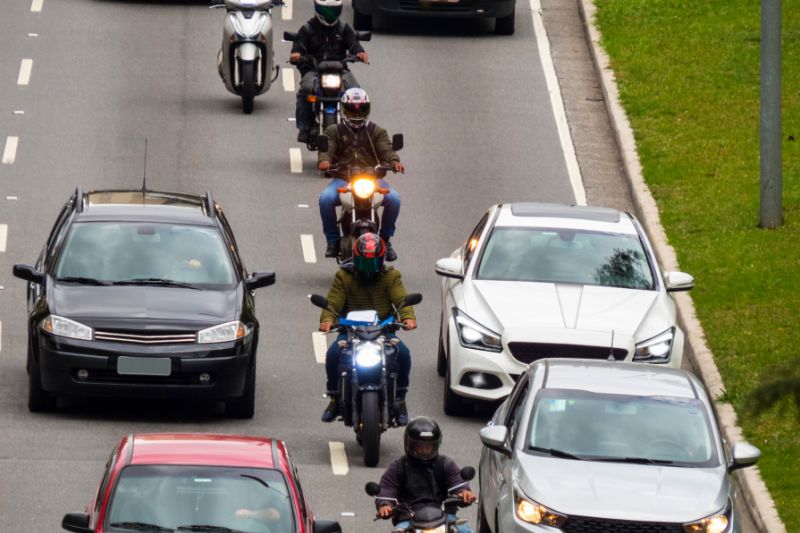Almost half of all motorcycle accidents happen at traffic intersections. Intersections require everyone to pay attention, and it is not always easy to determine who has the right of way. Because of this, California motorcycle accident attorneys can provide a lot of value to motorcyclists who have been involved in a motorcycle accident.
When Do Most Motorcycle Accidents Occur?
Many motorcycle accidents happen at night or during times of poor visibility, such as dusk or dawn. There is a higher chance of drunk or reckless driving, and drivers are also susceptible to poor visibility in their blind spots. Motorcyclists and automobile drivers have to be extra aware and extra cautious during these times to avoid potential accidents.
Intersections can be especially dangerous for motorcycles and motorcycle riders because of the size of the motorcycle. Motorcycles are smaller, so they are less visible than other automobiles. Intersections often have multiple vehicles present, and the potential for accidents is high. Helpful tips for motorcyclists at intersections include using hand signals and eye contact to clearly communicate their intentions to other car and truck drivers.
Motorcycle Accidents Are Dangerous
A motorcycle crash can be a complex situation that involves human interaction, vehicles, and environmental factors. While each motorcycle accident is different, one thing that is common among all motorcycle accidents is that more than 80 percent of the time, the accident leads to the injury or death of the motorcyclist. Motorcycles are increasingly becoming more popular in the United States. California is consistently one of the top states with the most motorcycle riders and motorcycle accidents.
A large percentage of motorcycle accidents happen due to a vehicle driver coming from the opposite direction and crossing into a motorcyclist’s path during a left-hand turn. Accidents can happen due to the driver’s failure to see the smaller motorcycle, misjudgment of the motorcycle’s speed and proximity, the driver being distracted, or because the driver is driving under the influence.
It is no secret that motorcycles are thought to be more dangerous than automobiles as there is more danger and exposure to the motorcyclist. The motorcycle itself does not provide any head injury protection or airbags to the motorcyclist or any possible passengers. Many accidents involve the motorcycle operator and/or passenger being ejected from the motorcycle and forcibly striking objects or the ground.
Helmets and the Proper Gear Can Help Prevent Injuries
A motorcycle does not possess the “crashworthiness” and occupant protection characteristics that a traditional automobile does. Department of Transportation-approved helmets can decrease the likelihood of death or serious head injuries in the event of a motorcycle crash. While California does require all motorcycle riders to wear a helmet, not all states have strict helmet laws.
While wearing helmets can go a long way to improve motorcyclists’ odds of reducing injury, it should be noted that wearing protective headgear does not guarantee protection against head or brain injuries or fatalities.
Additionally, wearing the proper gear like gloves, a leather or textile jacket and leather or textile pants can also help protect the rest of your body from abrasions.
Some of the Most Common Motorcycle Injuries
Along with head injuries, other common injuries that result from motorcycle accidents can include broken bones, spinal cord injuries, soft tissue injuries, and internal injuries. Internal injuries can lead to damaged organs or internal bleeding, often requiring surgery. It is vitally important that motorcyclists involved in an accident seek the proper medical attention they need after the accident.
It could also be beneficial for motorcyclists to take the necessary motorcycle safety courses to ensure they have the proper skills and knowledge of how to operate their motorcycles during dangerous traffic interactions. California (and most states) require motorcyclists to take and pass a motorcycle safety course before they can operate a motorcycle.
FAQs
Q: Where Is the Most Likely Place for a Motorcycle Accident?
A: More motorcycle accidents happen in urban, non-interstate roads and intersections. Urban areas are more likely to have more pedestrians and bicyclists, which could cause motorcyclists to swerve or abruptly stop to avoid them. Urban areas are also more likely to have dynamic road conditions such as potholes or construction debris, leading to more potential accidents.
Q: At What Speed Do Most Motorcycle Accidents Happen?
A: Motorcycle accidents can happen at any speed. On average, the speed of motorcycles is 30 miles per hour just before the accident occurs, and about 1 in 100 motorcycles are traveling 86 miles per hour or above just before the accident. As motorcyclists are much more vulnerable than automobile drivers, serious injuries or fatalities can happen at any speed.
Q: What Percent of People Survive Motorcycle Accidents?
A: About 90% of motorcyclists survive in motorcycle accidents. However, just because someone survives the crash does not mean that there were no serious injuries. Only about one in four motorcyclists are able to come away from an accident unscathed. About 80% of accidents result in an injury to the motorcyclist. Motorcycle riders can improve their odds of surviving crashes by wearing protective and Department of Transportation-approved helmets.
Q: What Is the Primary Cause of Motorcycle Crashes?
A: The primary cause of motorcycle crashes can be attributed to two main reasons: failure to yield and speeding. There are also environmental factors that can cause crashes, such as animals on the road, potholes, debris, weather, etc. These environmental factors account for roughly 18% of all motorcycle accidents. Other causes can include other human factors such as recklessness and driving under the influence.
Contact Guenard and Bozarth, LLP
At Guenard and Bozarth, LLP, our mission is to assist clients in navigating the legal aftermath of a motorcycle accident with compassion. A motorcycle accident can be physically, emotionally, and financially devastating, and our hands-on legal services can ensure that you understand your rights under California law.
We can explore every avenue and resource to determine how to counsel you regarding insurance, settlements, personal injury claims, and compensation. If you find yourself overwhelmed by the prospect of handling your motorcycle accident and its legalities on your own, please contact us to learn more about our outstanding legal team.


